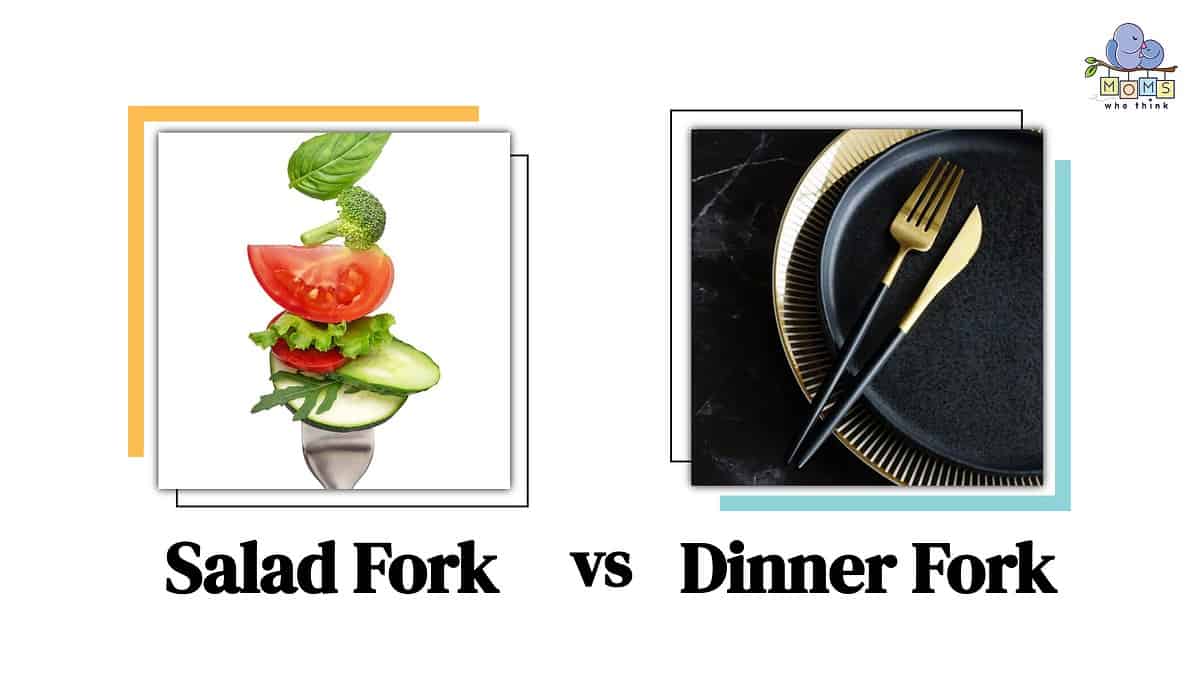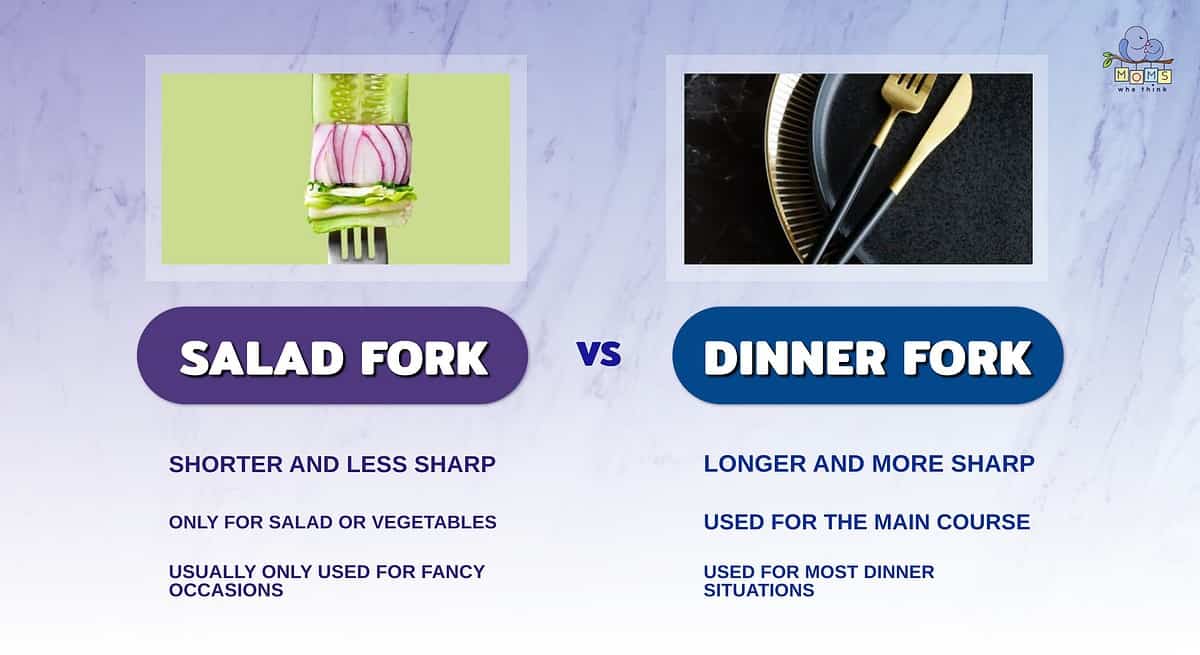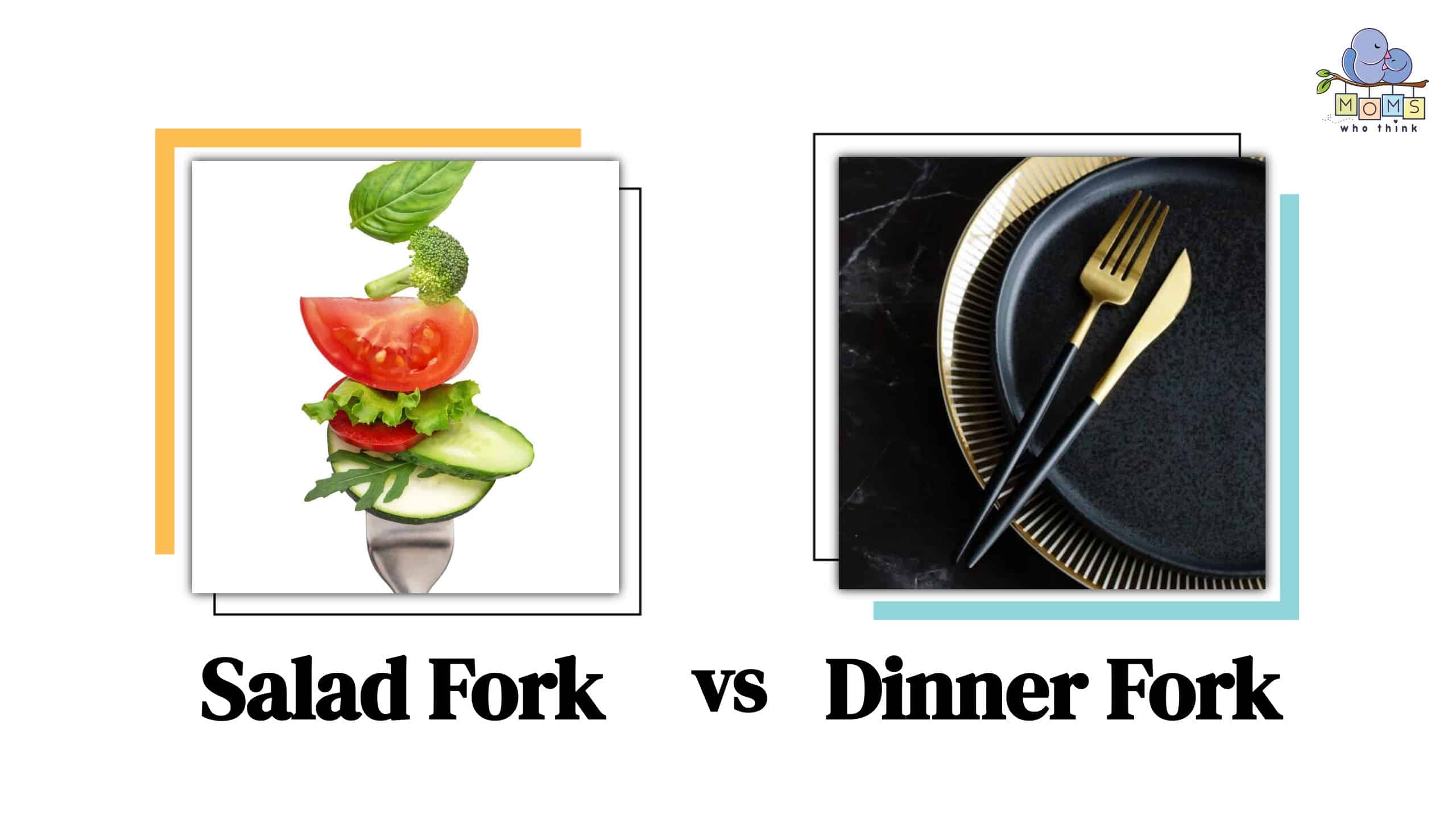Salad fork vs. dinner fork: What's the difference? You may want to know the difference if you're ever at a dinner party. Seeing an array of forks may make you unsure of what to choose. While they may look the same, especially if you've never seen them side by side, they are quite different.
The history of the fork dates back to the late 1500s and early 1600s. In the early to mid-1900s, from three to five, forks became more elaborate. There were different forks for different purposes, especially for salads, courses, and desserts. Regarding the salad fork vs. the dinner fork, notable differences make them stand out.
This article explores the unique aspects of a salad fork and how it differs from a dinner fork. We explore the different patterns on each fork that make it easier to identify each one. We also look at the etiquette of using each fork for other meals.
Salad Fork vs. Dinner Fork: What Is The Definition Of Each Fork?

Salad forks are exactly that – a fork designed for salads. However, it's also dinner than other forks in that it's shorter. The wheels are also spaced apart farther than a typical dinner fork. In general, salad forks are shorter than dinner forks.
These salad forks are designed for eating smaller salads. They have slightly sharp ends that make grabbing salad items like croutons, tomatoes, or lettuce easy.
The dinner fork is typically longer than any other fork. It has four tines that are sharper and can grab certain foods like meats or pasta. The dinner fork is also sometimes called the place fork.
There are also other kinds of forks beyond the dinner and salad fork that are worth mentioning. There's the serving fork, which is larger than the dinner fork. It's designed to pick up large pieces of meat or courses and place them on the plates. It has four tines.
The cake fork, or the dessert fork, is another common utensil for cakes, pies, and other desserts. When eating with this fork, you must use it lightly and gently when enjoying your dessert. It comes with either three or four tines.
The seafood or cocktail fork is another unique utensil perfect for eating shrimp, oysters, and mussels. The fork is designed to extract these delicacies. They are an elegant touch to whatever seafood you're eating.
The final fork to be aware of is the oyster fork. It's similar to the seafood food in that it's used for oysters. This fork is specifically designed for seafood dishes. It comes with three to four tines.
Types of Salad Forks
There are American and European salad forks. They each have a unique set of dinner silvery sets that set them apart when it comes to special meals.
For instance, the European salad fork is rounded shorter than the dinner fork. Additionally, this fork is closed in shape and can have as little as two tines or as many as four tines. This fork is for salads, fruit, ice creams, and appetizers.
The American salad fork is part of a larger five-piece silverware. It's found on the outermost side on the left side of the plate. The features are similar when comparing the American salad fork with the European-style fork. One unique difference is that the American salad fork has stainless steel elements that are a part of it.
How to Properly Identify a Salad Fork

To identify a salad fork at a table setting, look for the utensil on the outermost part of the left side of the dishes. It's always furthest away from the plate. Another thing to note is that this fork is the smallest of the utensils.
There are also fewer tines on the fork than other forks, especially compared to the dinner fork. You'll notice three to four tines on the salad fork compared to four to five on the dinner fork. Salad forks are also typically shorter and less sharp.
Knowing how to identify them can give you a better idea of what to look for next time you see a dinner fork and salad fork side by side at a fancy meal.
Should You Use a Salad or Dinner Fork?
What kind of fork should you use when you're eating? While some people will use any fork to eat anything, you can also use a salad or dinner fork with a specific purpose. You'll discover that a salad fork may be easier when eating certain foods.
Overall, knowing the difference can help you plan a more elegant design for a dinner party. It can also give you insight into the silverware and how to use it next time you're at a fancy party.

